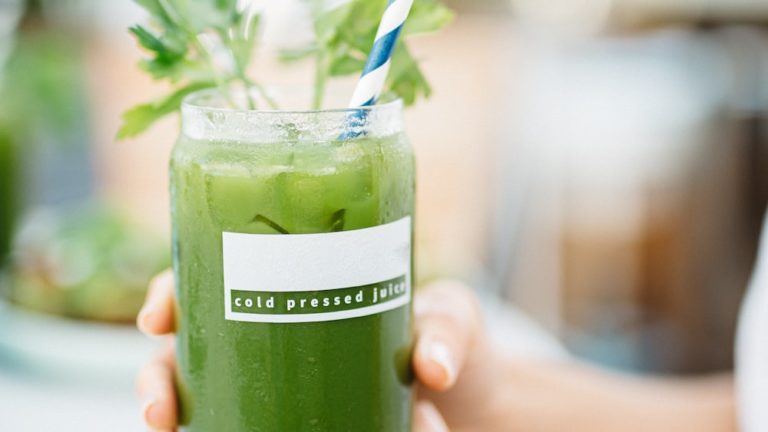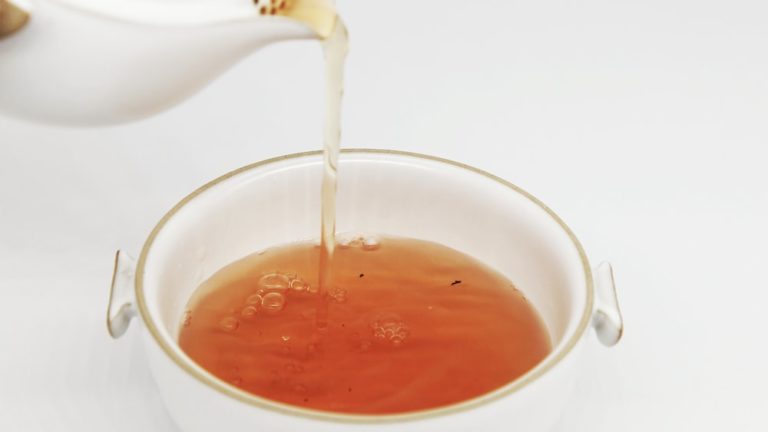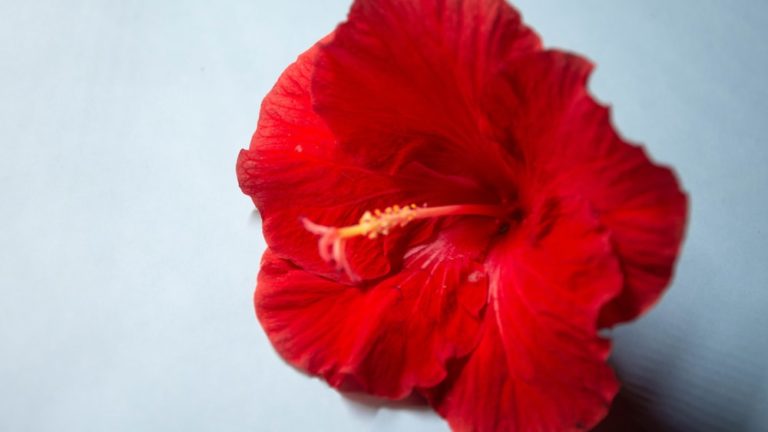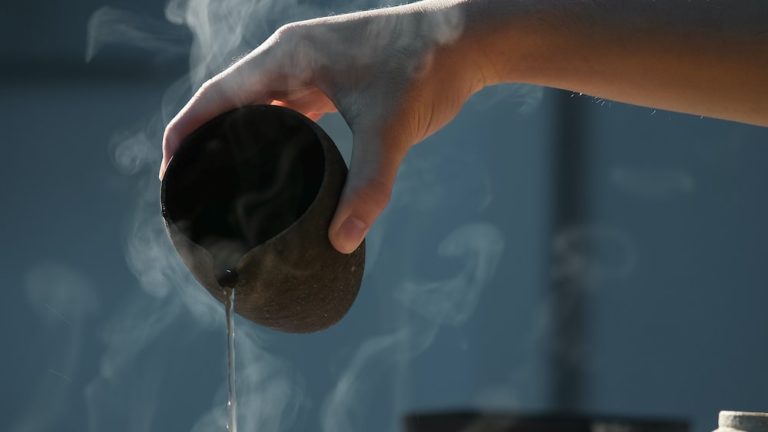What Does White Tea Taste Like? Discover The Delicate And Sweet Flavor
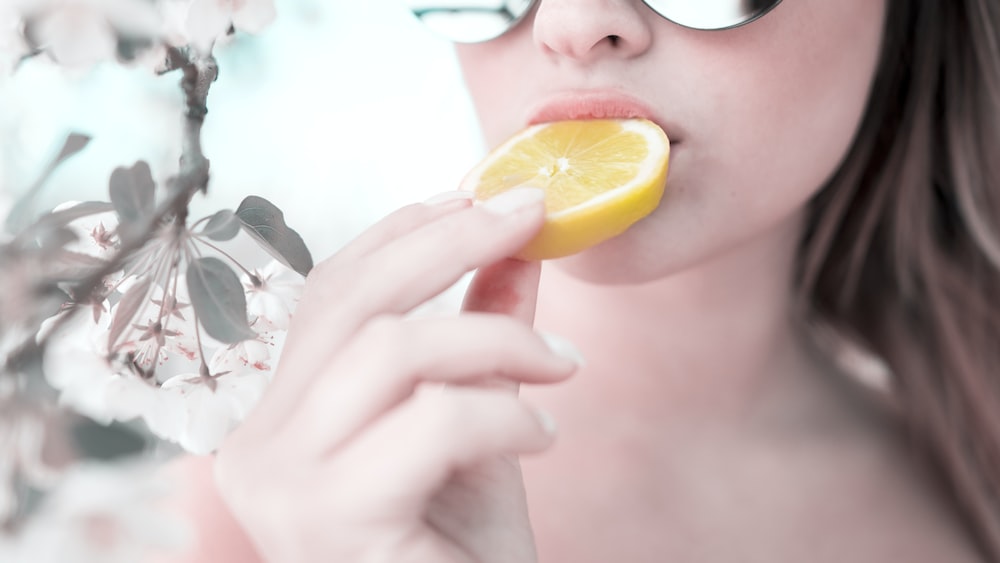
What Does White Tea Taste Like? Discover The Delicate And Sweet Flavor
Hello, tea enthusiasts, and health-conscious indi(TEA)viduals! Have you ever pondered the age-old question: “What does white tea taste like?”. Well, how about we settle down with a warm cuppa and dive headfirst into this tea-licious topic?
White tea, that elusive stranger in our tea cups, is like the great-uncle of the tea family – slightly mysterious, yet enigmatic and rich with fascinating stories. Known for its delicate taste and sweet allure, this tea has performed a swift pirouette and turned the tables on its more popular counterparts like green tea and black tea. From the whispers in the wind to the murmurs in the meadows, everyone’s brewing a storm about white tea.
With a wink and a nudge, let us navigate the aromatic realm of white tea. Together, we’ll discover the origins, brewing processes, and the factors lending to its unique flavor. Strap on your tea goggles, dear reader, let’s steep into the captivating world of white tea.
Understanding White Tea
Now, as we tip-toe into the garden of knowledge, what exactly is this nebulous thing called white tea? And how far have we come since the old Chinese dudes decided to steep some tea leaves without bothering to pan-fry or roll them? Cue fascinating story mode!
What is White Tea?
At its core, white tea is a type of tea that undergoes minimal processing. This minimalistic approach makes it the Beyonce of teas, stealing the limelight with its natural beauty. Made from the Camellia Sinensis plant – yes, the same dazzling diva that births green tea and black tea – white tea is the purest of them all.
Unlike its flamboyant sister, green tea, white tea is harvested before the tea leaves fully open, when the young buds are still covered by fine white hairs. Hence the moniker, “white tea’. Who said learning about tea wasn’t a hair-raising thrill ride!
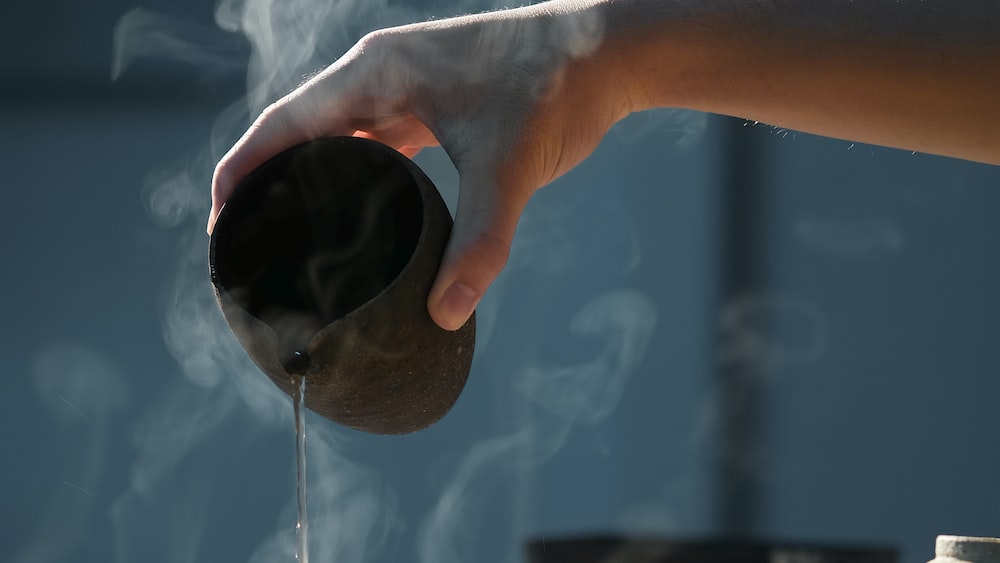
White tea steals the limelight with its minimalistic approach and natural beauty, making it the purest and most captivating tea of them all.
The Origin of White Tea
The history of white tea is as delicate and refined as the beverage itself. Pull up a chair, sip your brew, and let’s whisk ourselves back to the glorious days of the Chinese Tang Dynasty (618-907), the birthplace of white tea.
Tea, in those days, was powdered and shaped into cakes. However, white tea broke from tradition. It was simply plucked and allowed to wither under the natural sun before it was gently dried. This process retained the tea’s delicate taste and hundred years later, still leaves our tongues wagging.
Imperial tea gardens in Fujian Province were the cradle of this beverage. It is here that they gave birth to Silver Needle, the crème-de-la-crème of white tea. Now, the silver needle is spread worldwide, charming tea connoisseurs and health buffs alike!
How is White Tea Made?
Care for a whirlwind tour through the tea-rrific process of transforming young leaf buds into your favorite cup of white tea? The answer is always a resounding “Yes!”
The process starts at the bleary-eyed dawn, when the dew-kissed leaves are carefully hand-plucked. Remember, timing is everything! The budding leaves are harvested just as they are about to open. Imagine the precision of a swiss watch married to the delicacy of a ballet dancer, and you’ve captured the essence of the white tea plucking process.
Once plucked, the tea leaves are spread out to wither under the affectionate gaze of the sun. Their moisture gently evaporates, leaving behind the real essence of the leaf – a process poetic and practical in equal measure. The withering process accentuates the fragrance and the flavor of the leaf, like a love letter sealed with a kiss, before it is dried.
Finally, the buds are moved indoors and dried further at low temperatures. This helps retain the white fuzz on the buds (adding to the aesthetic appeal) and lean into their inherent delicate and sweet flavor. This laborious process magnifies the price of white tea but fetches paramount quality. Truly, the Bentley of the tea world!
The Unique Taste of White Tea
Ready to dive into the treasure trove of flavors that defines white tea? Brace your taste buds, and join me for a gustatory exploration of this divine brew!
Describing the Flavor Profile of White Tea
Now that we’re waist-deep in the sea of Tea- University, let’s tackle the tantalising mystery: “What does white tea taste like?” In all its gauzy mystique, the taste of white tea can be a dream to pin down.
It offers a taste that is lighter than its counterparts. It’s like the difference between catching a butterfly in your hand and trying to pin the moon in the sky- one is earthy and grounded, while the other is ephemeral and celestial. Fret not, it’s this delicate complexity that gives white tea its charm.
Factors Influencing the Taste of White Tea
Two key elements that dictate the taste of white tea like puppeteers pulling the strings from behind the velvet curtains. These are: the quality of tea leaves and the brewing process.
The quality of white tea depends on when the tea leaves are plucked – remember, white tea is derived from the first buds of the tea plant. The younger the leaves, the sweeter and delicate the flavor. The brewing process is incredibly important too, as the temperature and steeping time can dramatically affect the flavor. So pay heed, dear tea-drinker, for even in brewing, details matter!
The taste of white tea is determined by the quality of tea leaves and the brewing process, with the younger leaves providing a sweeter and delicate flavor, and the temperature and steeping time being crucial factors for a perfect brew.
Types of White Tea and Their Tastes
It’s like asking to choose between your favorite kids! I know, dear readers, every type of white tea has its allure, its aromatic symphony, but let’s unveil the stars of the white tea show!
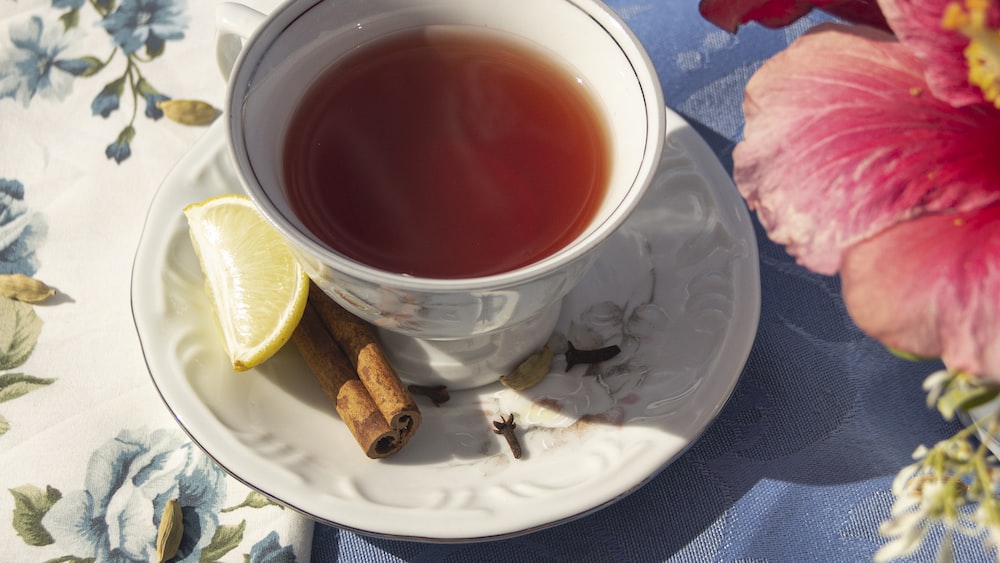
Silver Needle (Bai Hao Yin Zhen)
Behold, the Emperor of all white teas – the Silver Needle. Hailing from its regal birthplace, Fujian Province, its name comes from the grey-white color of the tea buds, which appear like silver needles.
A sip of Silver Needle is not just drinking; it’s a rhapsody of flavors dancing on your palate! It brings you a magical infusion, a delightful interplay of sweet, fruity, and floral flavors. Savor it as it calmly unfolds its flavors, leaving a lingering sweet aftertaste. Ah, the sweet joys of white tea!
White Peony (Bai Mu Dan)
Bow down to the Queen of white teas! White Peony, known as Bai Mu Dan, is your memoir of a Spring garden trapped in a teacup. It consists not just of the buds but also includes the top two leaves of the tea plant.
This leaf-bud ensemble lends it a fuller, richer flavor than the refined Silver Needle. Taste-wise, it strikes a perfect balance between floral and fruity notes, with a slight nutty finish at the end. Now, who wouldn’t want a garden party in their mouth!
Long Life Eyebrow (Shou Mei)
Ah, Shou Mei! Often seen as the underdog of white teas, it perfectly earns its unique moniker Long Life Eyebrow due to its distinctive brow-like shape. And of course, who wouldn’t want a dash of longevity with their daily dose of tea? Because, believe me, the lure of its taste will have you brewing this tea on the daily!
Quite unlike the quintessential “what does white tea taste like” enigma, Shou Mei stands out with a flavor profile that’s a vivid tapestry of fruity, woody, and sweet notes with a hint of earthiness. Think of it as the rock band of white teas – the quieter, classical music guys might get their noses in a twist, but secretly they can’t resist tapping their foot to it. Its taste, albeit stronger than other white teas, is not abrasive or harsh; instead, it charms you with its smooth finish and lingering sweetness that dances on your tongue.
The production process of Shou Mei tea is subtle yet intricate. Tea leaves and buds are left to wither under the sun, a natural dance that dawns dehydration and kickstarts the oxidation process. It’s the tea version of sunbathing really – only here, instead of a tan, we get an elixir renowned for its uniquely robust flavor.
Shou Mei tea stands out with its robust flavor profile of fruity, woody, and sweet notes, making it the rock band of white teas that even classical tea lovers secretly enjoy.
Tribute Eyebrow (Gong Mei)
Next up, let’s pop the lid off another masterpiece of white tea – Gong Mei, or as tea connoisseurs affectionately dub it, Tribute Eyebrow. This tea beckons tradition and charm, offering a slightly tart and crisp flavor compared to its cousin Shou Mei.
Gong Mei is like the older, more disciplined sibling. It’s still got that wild white tea spirit but tamed with an elegant restraint. Its liquor shimmers as the light catches it – a beautiful golden hue that’s just a trophy of the careful and meticulous processing it goes through. Gong Mei tastes like a summer evening feels – a little mellow, a bit floral, and subtly reminiscent of fresh fruit.
Darjeeling White
The beautiful hills of Darjeeling do more than just offer picturesque views; they also happen to be the birthplace of the charismatic Darjeeling White. This tea dances to its own tune, distinct from most, yet carrying the aura of the classic “what does white tea taste like” question.
Not to pull a steph huddleston here, but think of Darjeeling White as the “Chai Tea” of white teas. It borrows its name from its provenance, much like how “chai” basically means tea – a sweet irony, no? Darjeeling White tea is a symphony of delicate, floral notes with a touch of muscatel flavor that is characteristic of teas from this region. Your palate will be soothed by the gentle harmony of sweet, fruity, floral notes, followed by a lingering aftertaste of fresh, green grapes.
Brewing White Tea for Optimal Taste
Brewing white tea isn’t rocket science, but it’s close – it’s more like the science of good taste! Getting the brew right separates the tea amateurs from the tea virtuosos.
How to Brew White Tea
- Start with quality water: Sounds basic, right? But don’t underestimate the role of water in your brew. You want to opt for filtered water, as tap water can add an unpleasant flavor due to chlorine and other minerals.
- Heat the water but don’t boil it: For white tea, you want your water at a temperature between 160°F to 180°F (71°C to 82°C). If you’ve boiled your water, let it cool down a bit.
- Steep it right: Typically, you want to steep white tea for about 1 to 3 minutes. But feel free to experiment and adjust according to your preference of taste.
Best Practices for Brewing White Tea
The art of brewing white tea is just that – art. To create the perfect visual and taste symphony, remember these best practices.
Firstly, don’t oversteep! White tea is delicate; it’s like the little princess of teas. Treat it with the gentle respect it deserves. Oversteeping can introduce bitterness – something you’ll want to avoid.
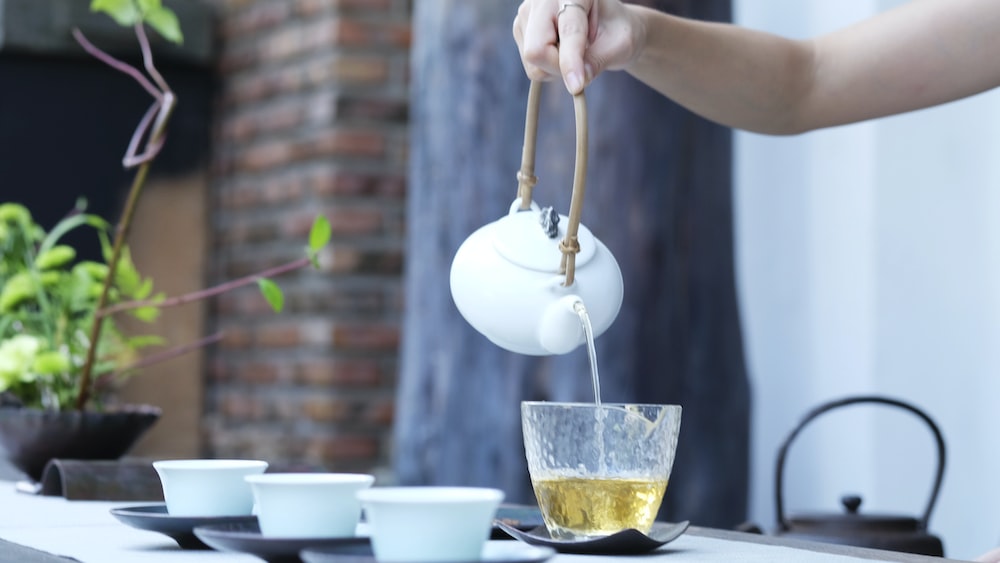
Secondly, measure accurately. A general rule of thumb is to use 2 grams of tea for every 6 ounces of water. Play around with these measurements to find your sweet spot.
To create a perfect visual and taste symphony when brewing white tea, remember the delicate nature of the tea and avoid oversteeping, as well as measuring accurately using the rule of 2 grams per 6 ounces of water.
Pairing White Tea with Food
Let’s take a moment to appreciate how versatile white tea is, especially when it comes to food pairings.
Ideal Food Pairings for White Tea
Just how rock and roll blends with jeans and leather, white tea finds soul in certain foods.
- Cheese: The creamy, often salty notes of cheese create a perfect flavor yin-yang with the gentle, sweet notes of white tea.
- Seafood: Lighter seafood plates, like grilled fish or shrimp, tie beautifully with the light subtlety of white tea.
- Desserts: What’s tea without a hint of sweet? Desserts like vanilla shortbread or lemon tarts are complemented wonderfully by the mild flavors of white tea.
Enhancing the Taste of White Tea with Food
Food not only makes a great buddy for your white tea, but it can even raise the bar for your tea-drinking escapade. It’s like stubborn plants that only flower in certain soils – provide white tea with its preferred companions, and it simply blossoms.
My first tip would be to experiment with different cuisines. The umami flavor of a Japanese seafood dish or the mild spices in Thai cuisine can bring out notes in your white tea you might never have noticed before.
My next bit advice would definitely be, pair according to moods. Sounds weird? It’s not. Say it’s a mellow afternoon with a slight chill in the air – that’s coming close to your ‘chai tea’ moments, so grab some spiced shortbread cookies with your white tea. Trust me, it’s a match made in heaven!
Finally, use pairing to offset strong flavors. If you’re indulging in a particularly rich dessert, pair it with a crisp white tea to cleanse your palate.
Health Benefits of White Tea
Is it a bird? Is it a plane? Nope, it’s just white tea being the superhero in the grand saga of health benefits! So let’s dive into the wellness world of white teas.
Antioxidants in White Tea
Have you ever imagined a bunch of tiny soldiers armed to their teeth defending your body? No? Well, let me introduce you to the antioxidants in white tea! They might as well wear armors and shields.Antioxidants, my dear friends, are microscopic compounds that protect your cells from damage caused by harmful molecules called free radicals. Free radicals are naughty little creatures that love to steal electrons from other molecules, causing a chain reaction of cellular damage. They’re like the foxes in the henhouse of your body.
White tea, indeed, is ground zero for these valiant antioxidant soldiers. Packed full of flavonoids and polyphenols, white tea has an even greater concentration of antioxidants than green or black tea. Imagine that! According to a study published in the Journal of Food Science, white tea has the highest antioxidant capacity among all the tea types – making it the Avengers of the tea world, really!
In our bodies, these antioxidants neutralize the free radicals before they can cause damage, effectively acting as peacekeepers, preventing these oxygen atoms from losing their cool and going on a destructive spree. They’re like a cool teacher who stops the bullies in their track on the playground and helps everyone get along.
White tea is packed full of antioxidants that act as valiant soldiers, protecting your cells from damage caused by free radicals.
White Tea and Heart Health
Heart health isn’t exactly a topic to get humorous, but let’s be frank, unless we’re talking about love songs or Valentine’s day, no one really talks about about it. But it’s vital, and white tea’s here to help!
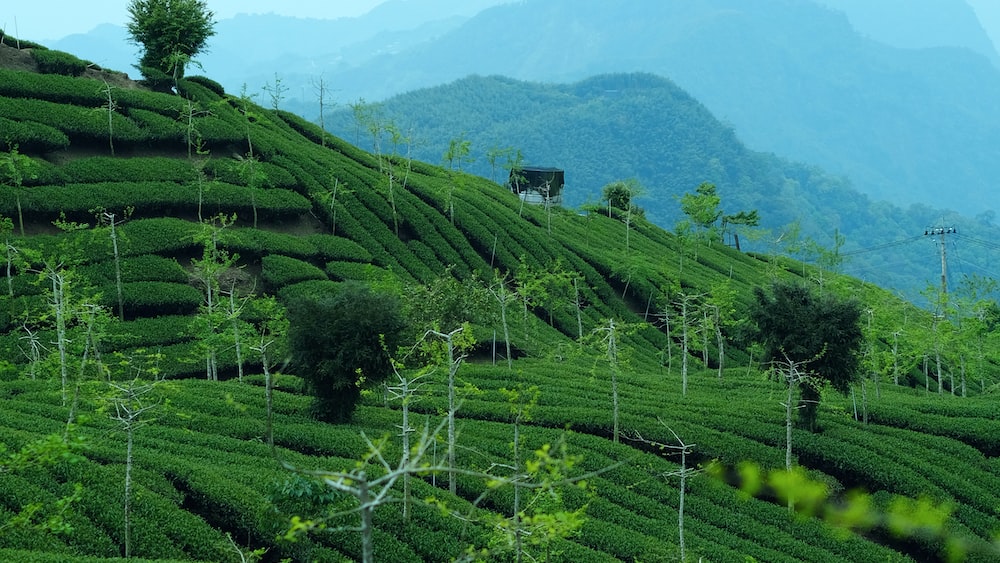
White tea has a particularly friendly bond with our hearts. It’s like that friend who’s always there when you need them most. Multiple studies suggest that the powerful antioxidants in white tea help lower bad cholesterol levels, reduce blood pressure, and improve overall blood vessel function. It’s like a personal fitness trainer for your heart, without the sweating and panting!
Weight Loss Benefits of White Tea
Who doesn’t want to shed a few pounds, while sipping a tasty beverage? Sounds like a dream, right? Well, wake up folks, because white tea is here to turn your dreams into a sweet reality!
White tea has been linked to various weight loss benefits, such as improving metabolism and blocking the formation of new fat cells. To put it simply, it’s like having your own personal weight loss coach disguised as a delicious cup of tea. Now, isn’t that a sweet deal?
Dental Health Benefits of White Tea
Ever thought of swishing tea in your mouth during early morning rush hours instead of toothpaste? Alright, that might be a stretch too far but hold on. White tea is well equipped with fluoride, catechins and flavonoids that can help protect our teeth from bacterial infections.
Picture this: with every sip of white tea, you’re inviting armed-to-the-teeth (pun intended) soldiers that fight against tooth decay, cavities and plaque build-up! It’s like having a mini army ensuring you keep that winning smile!
Sip white tea in the morning for a winning smile, as its fluoride, catechins, and flavonoids fight tooth decay, cavities, and plaque.
FAQs
1. Does the taste of white tea vary depending on its type?
Yes, the taste of white tea can vary. Just like wines, white tea flavors can be influenced by factors such as where they are from (like the ethereal Fujian province in China), how they are processed, and the specific variety of the tea leaves. I think we can all agree that diversity only adds to the beauty in our world of teas!
2. How does the brewing process affect the taste of white tea?
The brewing process surely has a significant impact on the taste of white tea. Water temperature, steeping time, and even the quality of water used can alter the flavor profile. Precisely why most tea enthusiasts (like us) like to fine-tune these parameters to find OUR perfect cup!
3. What foods pair well with white tea?
White tea’s delicate flavor pairs beautifully with light foods. Ever tried a cucumber sandwich or perhaps a vanilla sponge cake with your white tea? Mouthwatering, right? It’s like the Batman and Robin of teatime!
4. What are the health benefits associated with white tea?
When it comes to health benefits, white tea kind of hits it out of the park. From antioxidants that protect against free radicals, to the potential for heart health, weight loss, and dental health benefits – white tea is the one-stop health shop in disguise!
Conclusion
So, with every detail unearthed, we return to our original question – what does white tea taste like? In all its facets, its gentle, soothing taste departing a slight sweetness is quite a unique adventure!
Discovering white tea is a journey worth taking. It’s a path leading to delicate flavors, a wide spectrum of health benefits, and an enchanted tale of culture and history stretching back centuries, rooted firmly in the ground of the ethereal Fujian province. A cup of white tea is an invitation to slow down, savour, and enjoy the moment.
You are not just tasting tea, you are imbibing thousands of years of history, culture, and dedication to a beverage that’s much more than just a thirst-quencher. It’s a celebration in a cup! So, whenever you now think about what does white tea taste like, remember it tastes like a harmonious squeeze from nature filled with minuscule knights fighting for your health! Till next time, this is Zoe, hoping you uncover the joy in every sip of tea!

